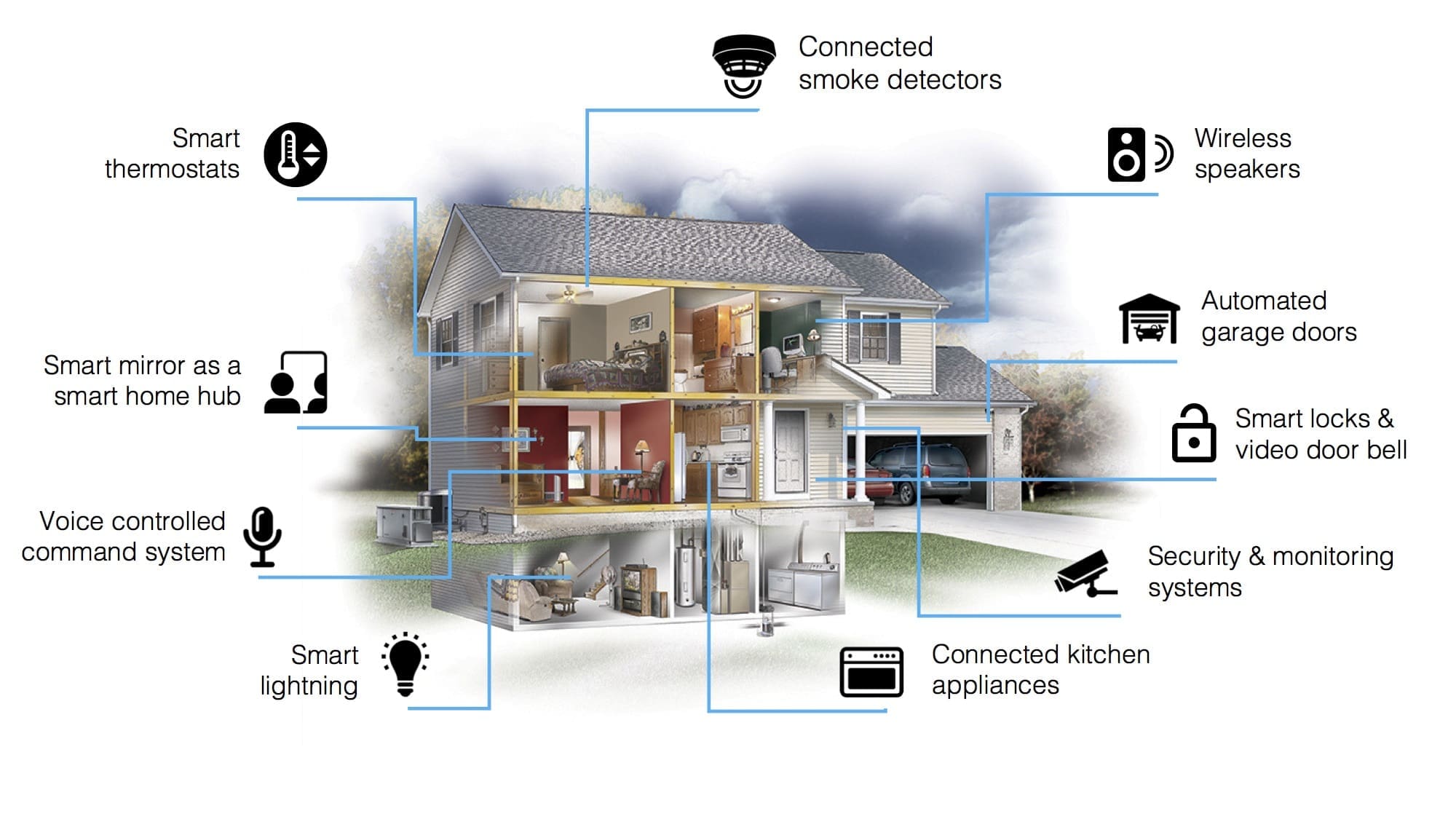In today’s tech-savvy world, smart homes are becoming increasingly popular. However, a truly integrated smart home goes beyond having a few smart devices. An integrated smart home seamlessly connects all your smart devices to work together, creating a cohesive and intelligent living environment. This integration enhances convenience, security, and energy efficiency, making your home smarter and your life easier.
The Core of an Integrated Smart Home
At its core, an integrated smart home uses a central hub or system to connect and control various smart devices. This hub communicates with devices like smart thermostats, lights, security cameras, door locks, and more, enabling them to interact with each other. The result is a home where you can control multiple devices with a single command, automate routines, and receive real-time alerts and updates.
Key Components of an Integrated Smart Home
- Smart Hub:
- The smart hub is the brain of your integrated smart home. Popular options include Amazon Echo, Google Nest Hub, and Apple HomeKit. These hubs connect to your devices via Wi-Fi, Zigbee, Z-Wave, or Bluetooth, allowing them to communicate and work together.
- Smart Lighting:
- Smart lighting systems let you control your lights remotely, set schedules, and create scenes. Integrated smart homes can automate lighting based on your routines or presence. For instance, lights can turn on when you enter a room, off when you leave, or dim automatically in the evening.
- Smart Thermostats:
- Smart thermostats like Nest and Ecobee learn your schedule and preferences to optimize heating and cooling. They can adjust the temperature based on location, weather conditions, and occupancy, saving energy and increasing comfort.
- Smart Security:
- Integrated security systems combine smart cameras, doorbells, locks, and sensors. These systems provide real-time alerts, remote monitoring, and control. For example, you can lock or unlock doors from your smartphone, view live camera feeds, and receive notifications if suspicious activity is detected.
- Smart Appliances:
- Smart appliances, including refrigerators, ovens, and washing machines, can be controlled and monitored remotely. They offer features like energy monitoring, maintenance alerts, and integration with other devices for a seamless experience.
- Voice Assistants:
- Voice assistants like Amazon Alexa, Google Assistant, and Apple Siri can be beneficial in an integrated smart home. They allow you to control devices using voice commands, making it easy to manage your home hands-free.
Benefits of an Integrated Smart Home
- Convenience:
- An integrated smart home simplifies daily tasks. Imagine starting your morning routine with a single command that turns on the lights, brews your coffee, and plays your favorite music. Automation frees up time and reduces the need for manual intervention.
- Enhanced Security:
- With integrated security systems, you can monitor your home from anywhere. Receive alerts for unusual activity, lock doors remotely, and ensure your home is always secure. Integration with other devices, like lights and alarms, adds an extra layer of protection.
- Energy Efficiency:
- Smart devices optimize energy usage, reducing waste and lowering utility bills. For example, smart thermostats adjust heating and cooling based on occupancy, while smart lighting systems ensure lights are off when not needed.
- Customization:
- Integrated smart homes offer high levels of customization. You can create personalized routines and scenes that fit your lifestyle. The possibilities are endless, whether it’s a “Goodnight” routine that locks doors and turns off lights or a “Welcome Home” scene that sets the perfect ambiance.
Setting Up an Integrated Smart Home
To integrate your smart home, start with a reliable smart hub that supports your devices. Next, choose compatible devices that meet your needs, such as smart lights, thermostats, and security systems. Ensure your hub and devices can communicate via common protocols like Wi-Fi, Zigbee, or Z-Wave.
Consider professional installation if you’re not tech-savvy or want a more complex setup. Professionals can ensure seamless integration and optimal performance.
Conclusion
An integrated smart home creates a connected, efficient, and convenient living environment. You can automate routines, enhance security, and save energy by linking various smart devices through a central hub. Embrace the future of living with a smart home that adapts to your lifestyle and simplifies your daily tasks.


No responses yet